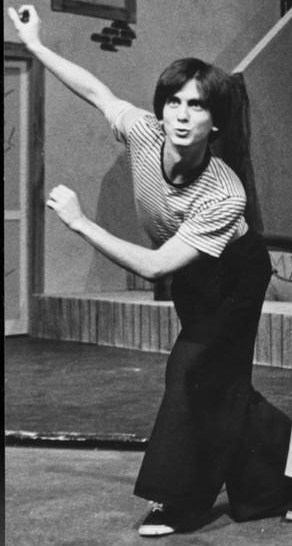
My friend Claudia was visiting last week, and I took her out to Signature to see their hit production of Dirty Blonde. This script has been around a while, and the original production visited the Kennedy Center years ago, with its author, Claudia Shear, in the title role. At the Sig, Emily Skinner is playing the dual roles of Mae West and Jo, a struggling actress who has an  obsession with her. I enjoyed Skinner immensely several years ago, when she costarred in The Witches of Eastwick, and allowed herself to be harnessed and hoisted over the audience in a pretty nifty bit of stagecraft.
obsession with her. I enjoyed Skinner immensely several years ago, when she costarred in The Witches of Eastwick, and allowed herself to be harnessed and hoisted over the audience in a pretty nifty bit of stagecraft.
 The show is directed by Jeremy Skidmore, with whom I worked in Thief River (he was a member of that cast; nowadays, he is one of the most in-demand directors in town). This play is pleasantly skitzo, moving swiftly between the biographical tale of Mae West's rise (and decline), and the lovely story of an actress's modern-day struggles. It was fun to learn more about West, whom I recall only from her bizarre Sextette years (did you know she was
The show is directed by Jeremy Skidmore, with whom I worked in Thief River (he was a member of that cast; nowadays, he is one of the most in-demand directors in town). This play is pleasantly skitzo, moving swiftly between the biographical tale of Mae West's rise (and decline), and the lovely story of an actress's modern-day struggles. It was fun to learn more about West, whom I recall only from her bizarre Sextette years (did you know she was  offered the role of Norma Desmond in Sunset Boulevard? She was offended, insisting she was too young!). But I really enjoyed the present day scenes in which our two unlikely lovebirds begin their offbeat romance. Not that there is a moment of sentimentality in this script, there isn't. Skinner is outstanding in these tentative love scenes, but she may be most memorable playing the octogenarian Mae, wobbly on her feet and shaky of voice, refusing to accept the limitations of her advanced age.
offered the role of Norma Desmond in Sunset Boulevard? She was offended, insisting she was too young!). But I really enjoyed the present day scenes in which our two unlikely lovebirds begin their offbeat romance. Not that there is a moment of sentimentality in this script, there isn't. Skinner is outstanding in these tentative love scenes, but she may be most memorable playing the octogenarian Mae, wobbly on her feet and shaky of voice, refusing to accept the limitations of her advanced age.


 obsession with her. I enjoyed Skinner immensely several years ago, when she costarred in The Witches of Eastwick, and allowed herself to be harnessed and hoisted over the audience in a pretty nifty bit of stagecraft.
obsession with her. I enjoyed Skinner immensely several years ago, when she costarred in The Witches of Eastwick, and allowed herself to be harnessed and hoisted over the audience in a pretty nifty bit of stagecraft.In Dirty Blonde, all the stagecraft comes organically, directly from the actors, and is even more impressive. Skinner is spectacular in her impersonation of West; she takes her bigger-than-life  personality through decades of the star's career, and is particularly poignant in the sequences in which Mae is in her 80s. She is supported by two of the busiest character actors in DC, J. Fred Shiffman and Hugh Nees, both of whom are terrific in a variety of roles. I've admired Shiffman's work for years, and Hugh, who is a slight acquaintance of mine, has been equally enjoyable in theatres all over town. In
personality through decades of the star's career, and is particularly poignant in the sequences in which Mae is in her 80s. She is supported by two of the busiest character actors in DC, J. Fred Shiffman and Hugh Nees, both of whom are terrific in a variety of roles. I've admired Shiffman's work for years, and Hugh, who is a slight acquaintance of mine, has been equally enjoyable in theatres all over town. In  particular, Fred is effective as West's abandoned husband, and Hugh gets the challenge of playing a lonely librarian with a pretty unique fetish. I bet Hugh does not get the chance to play the romantic lead very often, but in Dirty Blonde, he gets to meet, woo, and win the girl. And wear a Hello, Dolly gown while doing it.
particular, Fred is effective as West's abandoned husband, and Hugh gets the challenge of playing a lonely librarian with a pretty unique fetish. I bet Hugh does not get the chance to play the romantic lead very often, but in Dirty Blonde, he gets to meet, woo, and win the girl. And wear a Hello, Dolly gown while doing it.
 personality through decades of the star's career, and is particularly poignant in the sequences in which Mae is in her 80s. She is supported by two of the busiest character actors in DC, J. Fred Shiffman and Hugh Nees, both of whom are terrific in a variety of roles. I've admired Shiffman's work for years, and Hugh, who is a slight acquaintance of mine, has been equally enjoyable in theatres all over town. In
personality through decades of the star's career, and is particularly poignant in the sequences in which Mae is in her 80s. She is supported by two of the busiest character actors in DC, J. Fred Shiffman and Hugh Nees, both of whom are terrific in a variety of roles. I've admired Shiffman's work for years, and Hugh, who is a slight acquaintance of mine, has been equally enjoyable in theatres all over town. In  particular, Fred is effective as West's abandoned husband, and Hugh gets the challenge of playing a lonely librarian with a pretty unique fetish. I bet Hugh does not get the chance to play the romantic lead very often, but in Dirty Blonde, he gets to meet, woo, and win the girl. And wear a Hello, Dolly gown while doing it.
particular, Fred is effective as West's abandoned husband, and Hugh gets the challenge of playing a lonely librarian with a pretty unique fetish. I bet Hugh does not get the chance to play the romantic lead very often, but in Dirty Blonde, he gets to meet, woo, and win the girl. And wear a Hello, Dolly gown while doing it. The show is directed by Jeremy Skidmore, with whom I worked in Thief River (he was a member of that cast; nowadays, he is one of the most in-demand directors in town). This play is pleasantly skitzo, moving swiftly between the biographical tale of Mae West's rise (and decline), and the lovely story of an actress's modern-day struggles. It was fun to learn more about West, whom I recall only from her bizarre Sextette years (did you know she was
The show is directed by Jeremy Skidmore, with whom I worked in Thief River (he was a member of that cast; nowadays, he is one of the most in-demand directors in town). This play is pleasantly skitzo, moving swiftly between the biographical tale of Mae West's rise (and decline), and the lovely story of an actress's modern-day struggles. It was fun to learn more about West, whom I recall only from her bizarre Sextette years (did you know she was  offered the role of Norma Desmond in Sunset Boulevard? She was offended, insisting she was too young!). But I really enjoyed the present day scenes in which our two unlikely lovebirds begin their offbeat romance. Not that there is a moment of sentimentality in this script, there isn't. Skinner is outstanding in these tentative love scenes, but she may be most memorable playing the octogenarian Mae, wobbly on her feet and shaky of voice, refusing to accept the limitations of her advanced age.
offered the role of Norma Desmond in Sunset Boulevard? She was offended, insisting she was too young!). But I really enjoyed the present day scenes in which our two unlikely lovebirds begin their offbeat romance. Not that there is a moment of sentimentality in this script, there isn't. Skinner is outstanding in these tentative love scenes, but she may be most memorable playing the octogenarian Mae, wobbly on her feet and shaky of voice, refusing to accept the limitations of her advanced age.
Up at Round House Theatre in Bethesda, there is another character who is dealing with advancing age. He looks better than Mae West, but is a good bit creepier. The Picture of Dorian Gray is Oscar Wilde's story of narcissism and obsession with youth. At Round House, it has become Roberto Aguirre-Sacasa's story of pathological evil and obsession with low body fat (seriously, I doubt leading man Roderick Hill could pinch his skin with a pair of pliers).

This adaptation has moved the action to the 1980s and beyond, and I found it engrossing and  yes, a bit titillating, too. Hey, if you had a leading actor who was built like that, wouldn't you put him in various stages of undress throughout the play? Playwright Aguirre-Sacasa has taken the subtle homoerotic undertone of the original, and...um...enhanced it. Director Blake Robison is using my buddy Clinton Brandhagen (above) as the tortured artist obsessed with our hero (well, he's not really a hero, is he? Anti-hero?). Clinton was one of my Mikeys in my last engagement with Shear Madness a year or so ago, and as such, gives a dynamite performance here (I feel very proprietary about everyone I ever worked with in Shear Madness; what's that about?).
yes, a bit titillating, too. Hey, if you had a leading actor who was built like that, wouldn't you put him in various stages of undress throughout the play? Playwright Aguirre-Sacasa has taken the subtle homoerotic undertone of the original, and...um...enhanced it. Director Blake Robison is using my buddy Clinton Brandhagen (above) as the tortured artist obsessed with our hero (well, he's not really a hero, is he? Anti-hero?). Clinton was one of my Mikeys in my last engagement with Shear Madness a year or so ago, and as such, gives a dynamite performance here (I feel very proprietary about everyone I ever worked with in Shear Madness; what's that about?).
 In keeping with the phenomenon mentioned in these pages many times (that my friends are always standouts in their shows), it comes as no surprise to me that Joel Ganz (who was an intern in South Carolina the season I did several shows down there) nails two key characters. And looks great in those tighty whities, too. Also, Tim Pabon does a nice job with a variety of
In keeping with the phenomenon mentioned in these pages many times (that my friends are always standouts in their shows), it comes as no surprise to me that Joel Ganz (who was an intern in South Carolina the season I did several shows down there) nails two key characters. And looks great in those tighty whities, too. Also, Tim Pabon does a nice job with a variety of  ancillary characters (Tim was a student of mine in a movement workshop years ago; I take no credit for his acting ability, which is considerable).
ancillary characters (Tim was a student of mine in a movement workshop years ago; I take no credit for his acting ability, which is considerable).
 yes, a bit titillating, too. Hey, if you had a leading actor who was built like that, wouldn't you put him in various stages of undress throughout the play? Playwright Aguirre-Sacasa has taken the subtle homoerotic undertone of the original, and...um...enhanced it. Director Blake Robison is using my buddy Clinton Brandhagen (above) as the tortured artist obsessed with our hero (well, he's not really a hero, is he? Anti-hero?). Clinton was one of my Mikeys in my last engagement with Shear Madness a year or so ago, and as such, gives a dynamite performance here (I feel very proprietary about everyone I ever worked with in Shear Madness; what's that about?).
yes, a bit titillating, too. Hey, if you had a leading actor who was built like that, wouldn't you put him in various stages of undress throughout the play? Playwright Aguirre-Sacasa has taken the subtle homoerotic undertone of the original, and...um...enhanced it. Director Blake Robison is using my buddy Clinton Brandhagen (above) as the tortured artist obsessed with our hero (well, he's not really a hero, is he? Anti-hero?). Clinton was one of my Mikeys in my last engagement with Shear Madness a year or so ago, and as such, gives a dynamite performance here (I feel very proprietary about everyone I ever worked with in Shear Madness; what's that about?). In keeping with the phenomenon mentioned in these pages many times (that my friends are always standouts in their shows), it comes as no surprise to me that Joel Ganz (who was an intern in South Carolina the season I did several shows down there) nails two key characters. And looks great in those tighty whities, too. Also, Tim Pabon does a nice job with a variety of
In keeping with the phenomenon mentioned in these pages many times (that my friends are always standouts in their shows), it comes as no surprise to me that Joel Ganz (who was an intern in South Carolina the season I did several shows down there) nails two key characters. And looks great in those tighty whities, too. Also, Tim Pabon does a nice job with a variety of  ancillary characters (Tim was a student of mine in a movement workshop years ago; I take no credit for his acting ability, which is considerable).
ancillary characters (Tim was a student of mine in a movement workshop years ago; I take no credit for his acting ability, which is considerable).But you know who else does a great job? Sean Dugan, a man I have never met nor even seen before, playing Dorian Gray's best friend. I enjoyed his work in every scene, including his awkwardly written death. Yes, I have to go back to the playwright here. As I said, I was thoroughly engrossed in the story for about two thirds of the show. However, the final third descended into melodrama (and not the good kind) with a gruesome dollop of grand guignol (and not the grand kind). The quick series of murders and suicides during this last sequence pulled me out of the play, and when the ghosts all came back in a hugely graphic way, well, I was done. And that was a shame. The actors never gave up, and played the final scenes of the play with full commitment, which is to be commended. But there is only so much you can do with a play which starts out as an intense psychological thriller but turns into a bloody slasher flick. And I wish that portrait would have continued to subtly reflect the immorality of its subject, rather than becoming a maniacal caricature (the Post's critic, who disliked this show from start to finish, called that portrait the Bride of Chucky).
done. And that was a shame. The actors never gave up, and played the final scenes of the play with full commitment, which is to be commended. But there is only so much you can do with a play which starts out as an intense psychological thriller but turns into a bloody slasher flick. And I wish that portrait would have continued to subtly reflect the immorality of its subject, rather than becoming a maniacal caricature (the Post's critic, who disliked this show from start to finish, called that portrait the Bride of Chucky).
 done. And that was a shame. The actors never gave up, and played the final scenes of the play with full commitment, which is to be commended. But there is only so much you can do with a play which starts out as an intense psychological thriller but turns into a bloody slasher flick. And I wish that portrait would have continued to subtly reflect the immorality of its subject, rather than becoming a maniacal caricature (the Post's critic, who disliked this show from start to finish, called that portrait the Bride of Chucky).
done. And that was a shame. The actors never gave up, and played the final scenes of the play with full commitment, which is to be commended. But there is only so much you can do with a play which starts out as an intense psychological thriller but turns into a bloody slasher flick. And I wish that portrait would have continued to subtly reflect the immorality of its subject, rather than becoming a maniacal caricature (the Post's critic, who disliked this show from start to finish, called that portrait the Bride of Chucky).I hope Aguirre-Sacasa revisits the final 40 minutes or so of his adaptation, because, at least from my seat, it derailed a really promising production. And it reminds the viewer that the playwright's day job is writing comic books.

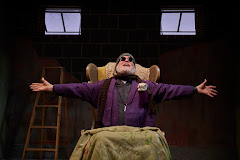




























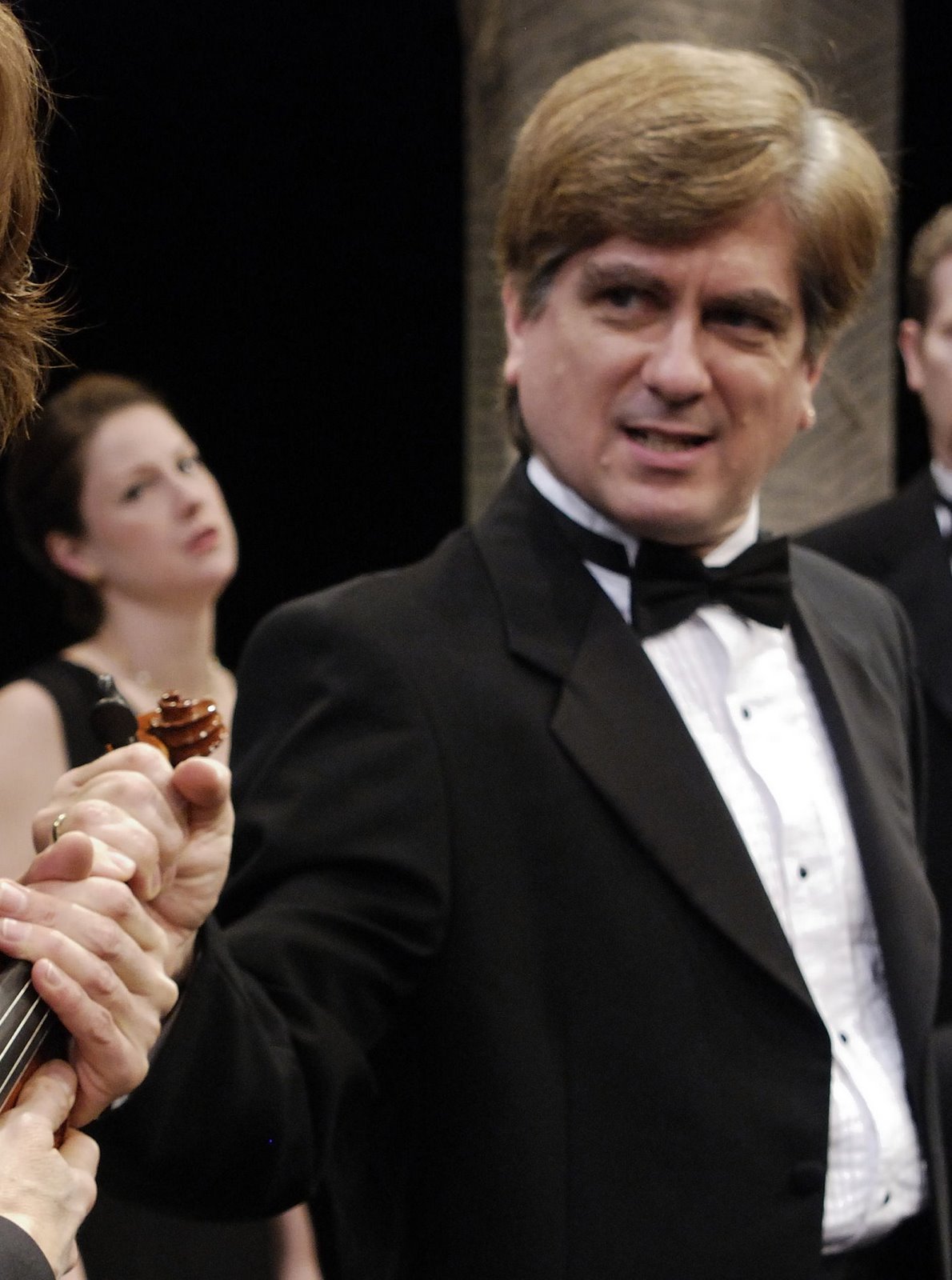
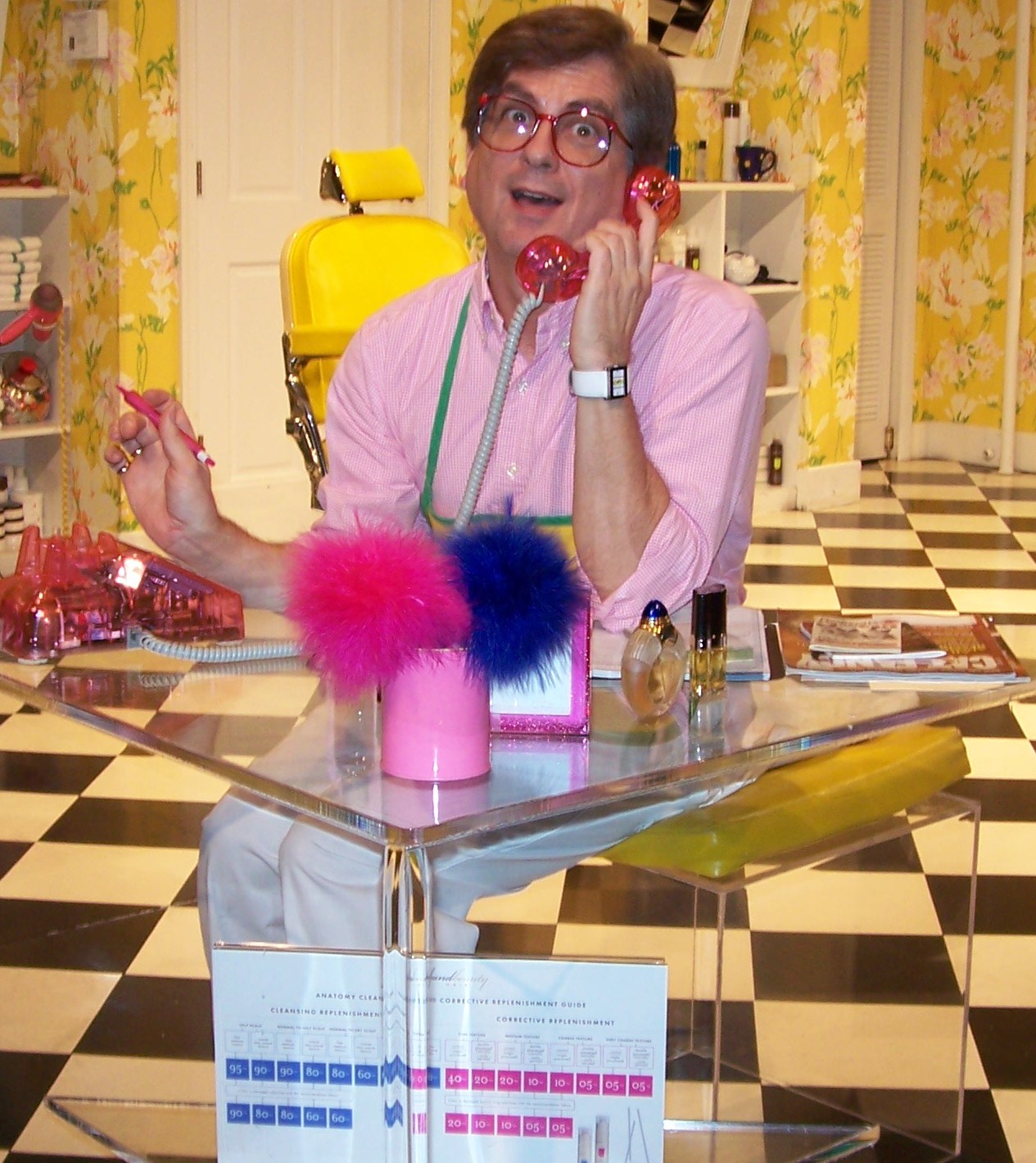
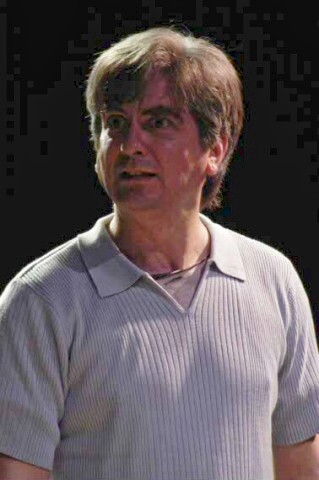
,+Olney+Theatre+Center,+2004.jpg)


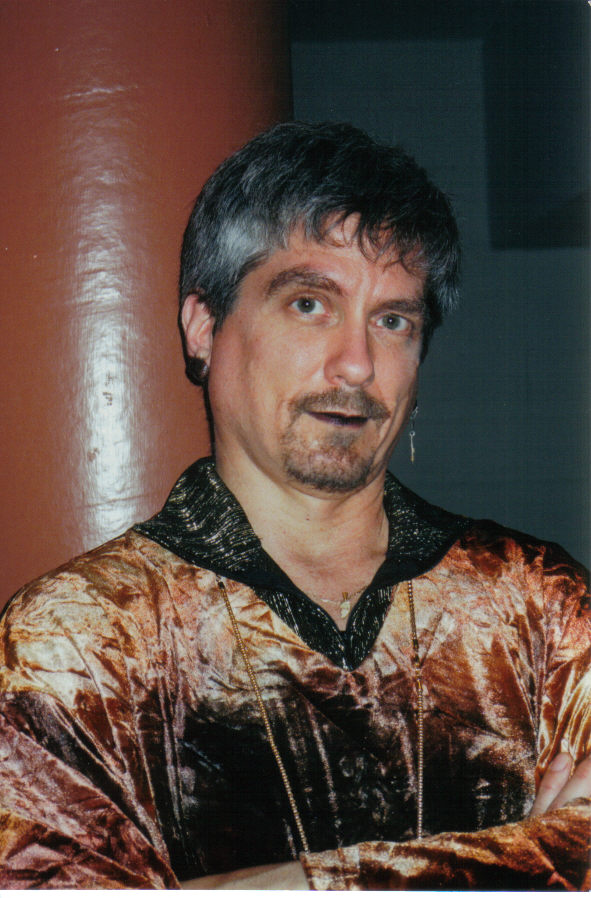
,+Shakespeare+Theatre+Company,.jpg)
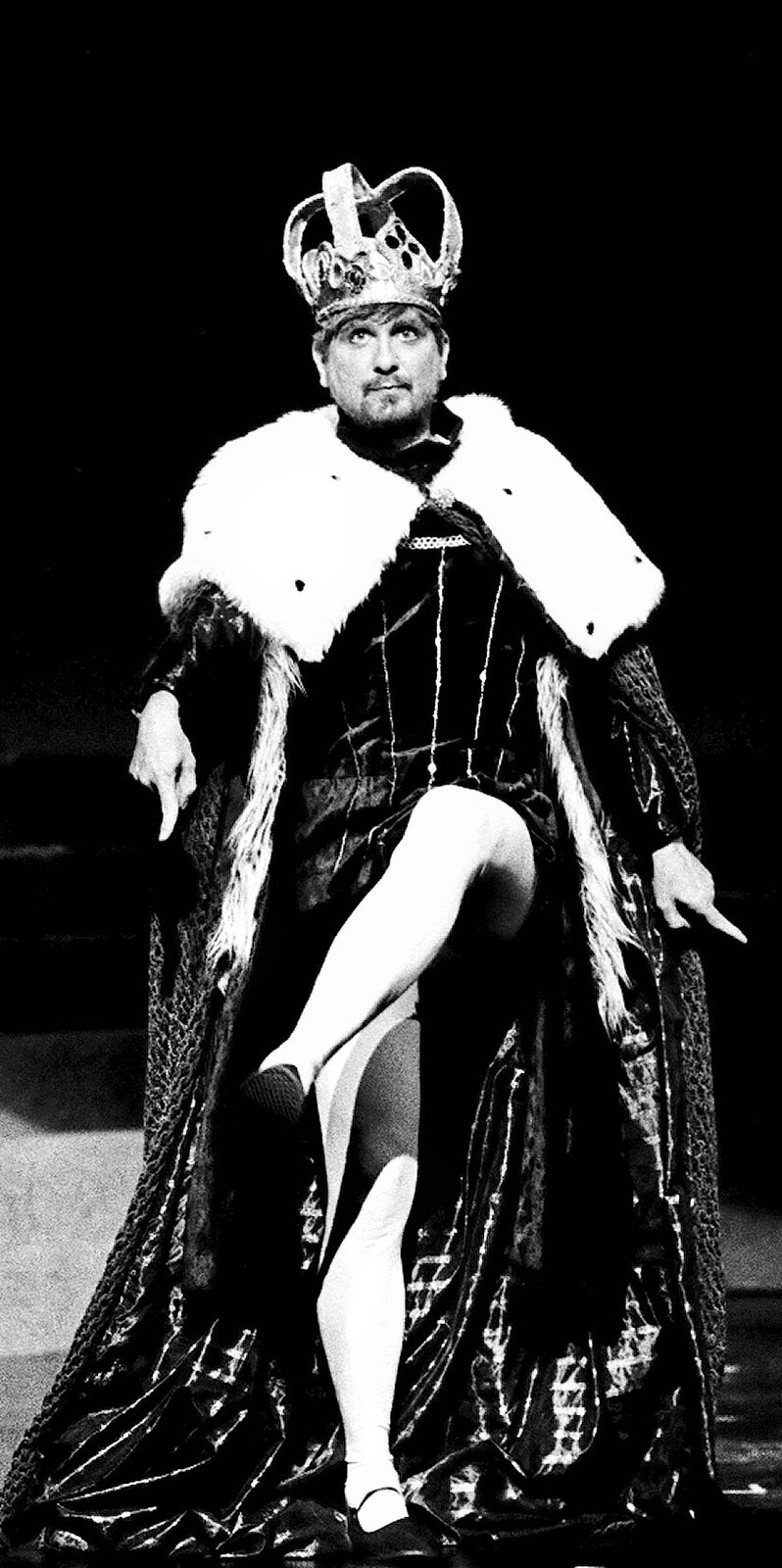

,+Warehouse+Theatre,+1999.jpg)
,+Are.jpg)
,+Everyman+Theatre,2002.jpg)
,+First+Nationa.jpg)
,+Shakespeare+Theatre+Company,.jpg)


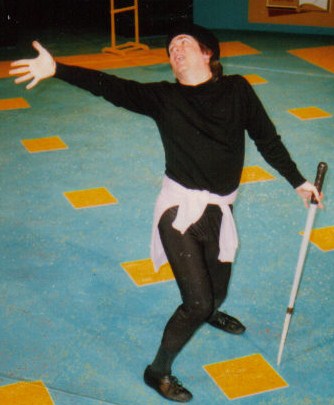
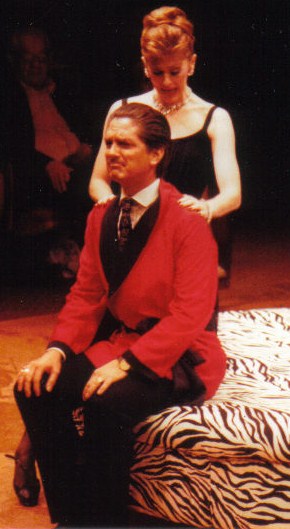


,+Granada+Th.jpg)
,+Globe+Playhouse,.jpg)
,+CSUN,+1976.jpg)
